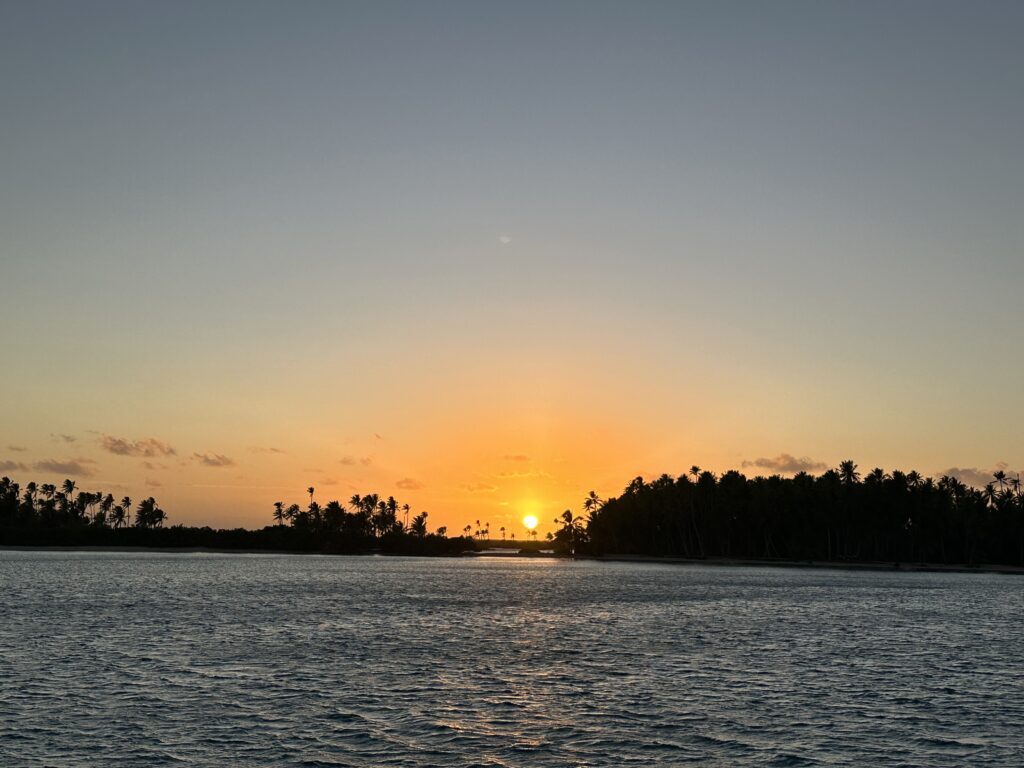Our passage from Hiva Oa in the Marquesan archipelago to the Raroia atoll in the Tuamotu archipelago was around 420 nm, meaning we planned for a three night passage. We had heard from friends of us doing this passage before us, that it could be quite choppy.
However, we were lucky with our weather window, and had a rather smooth sail. The captain even barbecued on the way, which is not often!
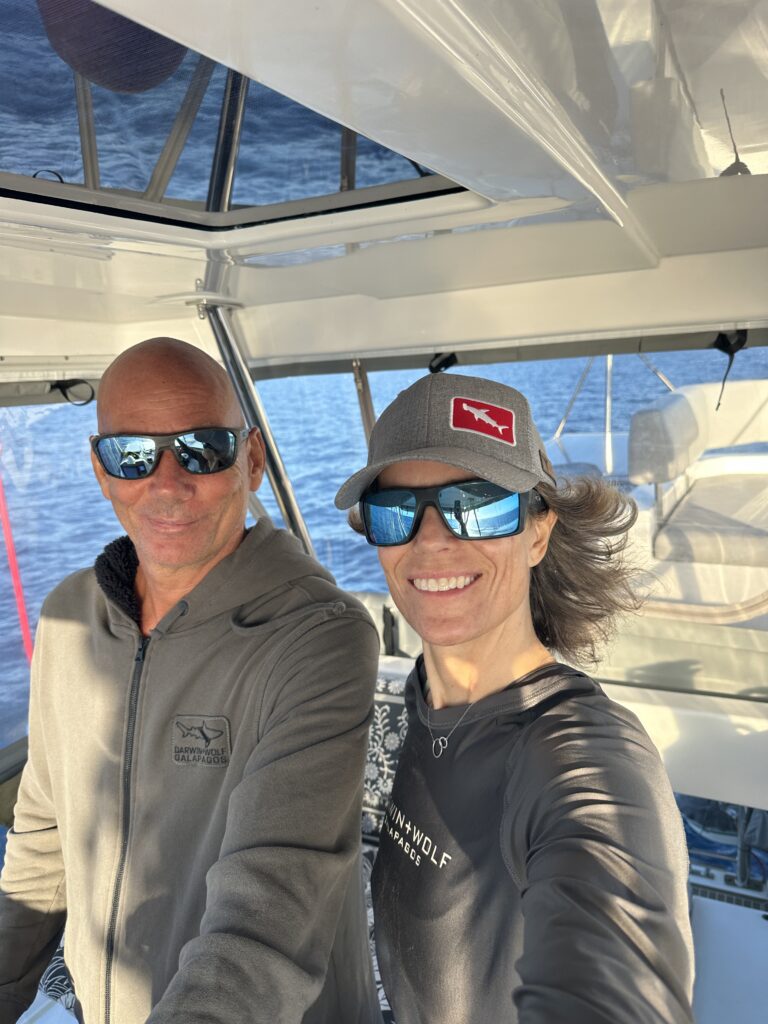
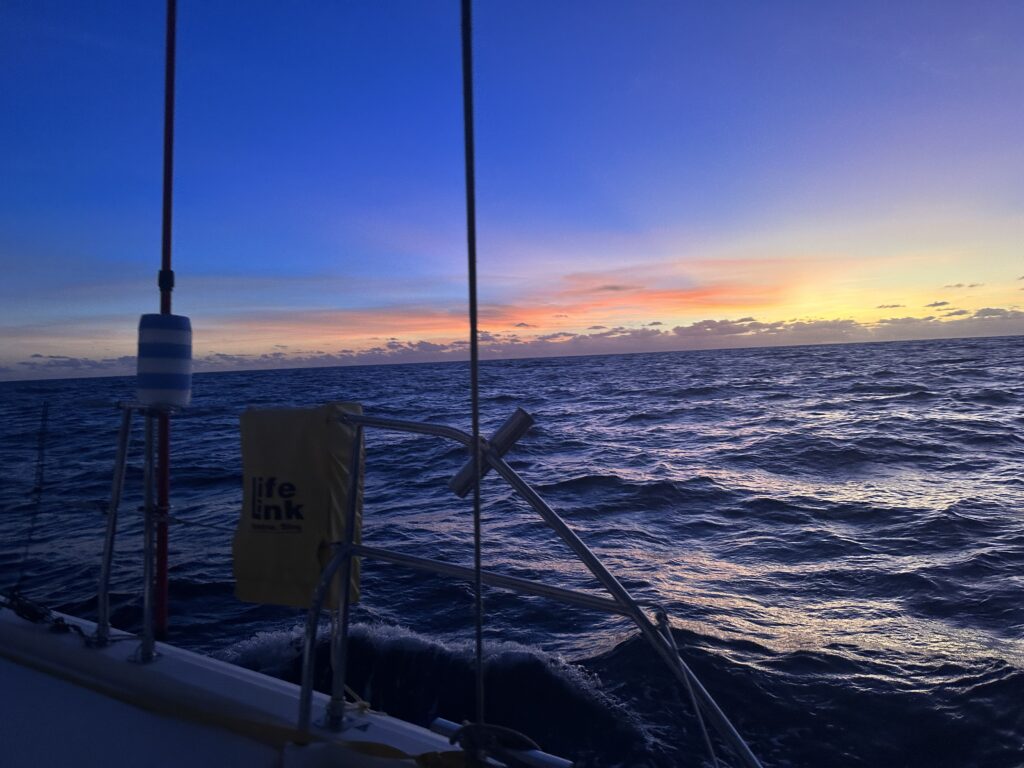
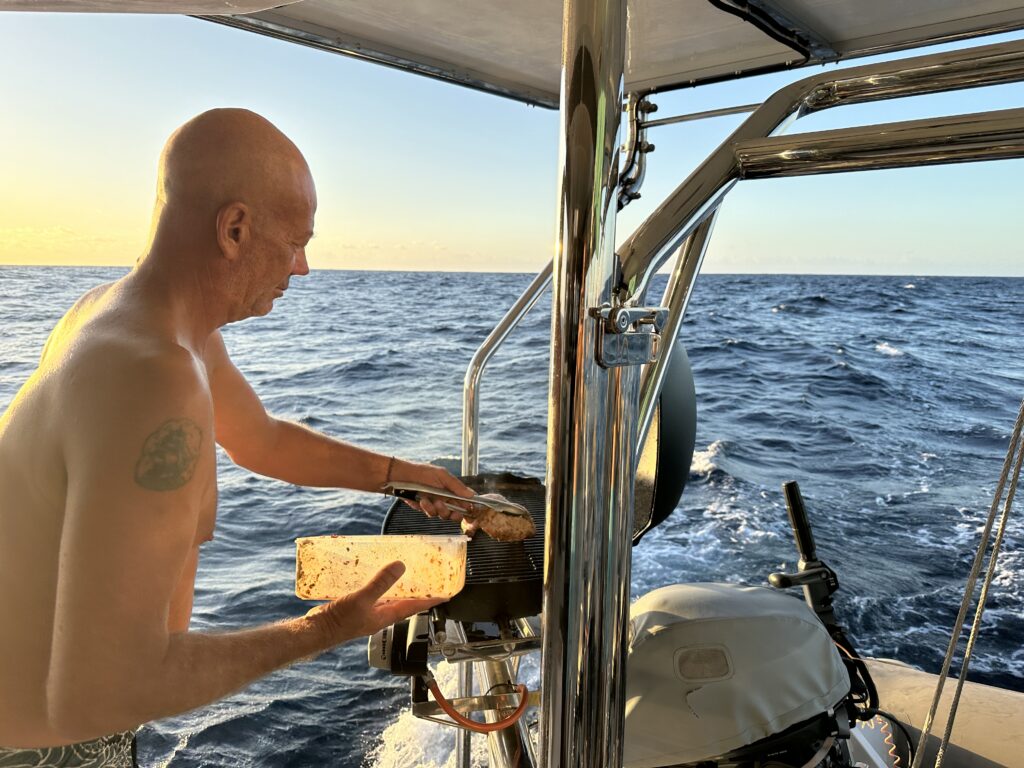
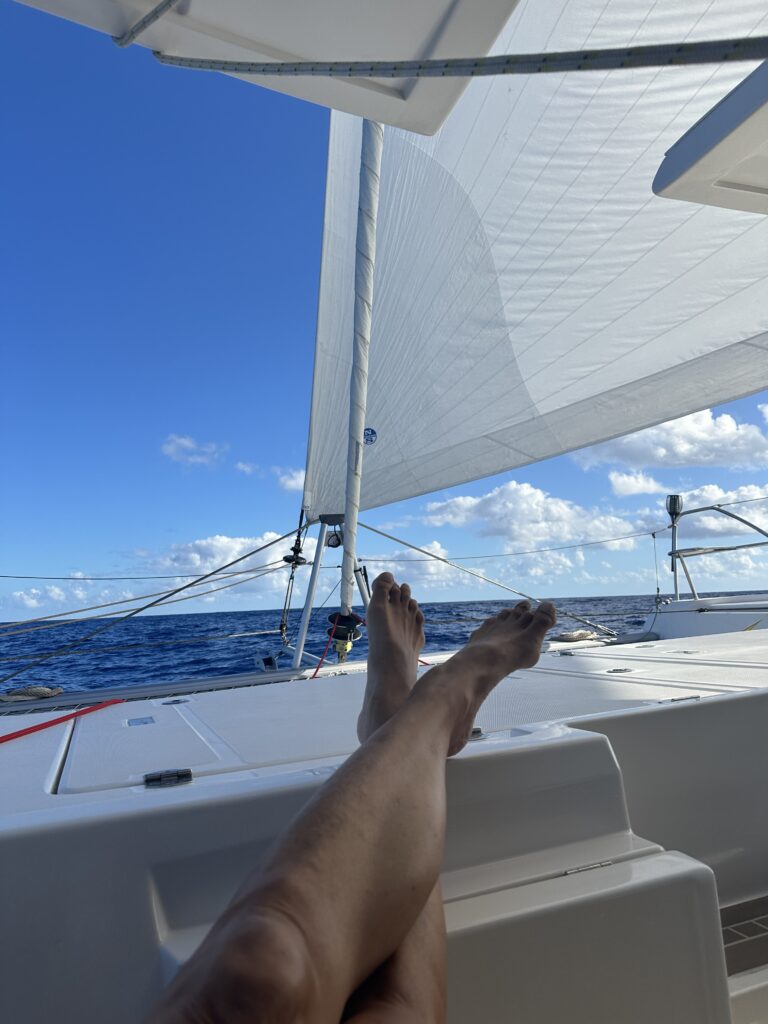
There are many elements one needs to plan for when making this passage, besides planning for an arrival during daylight. The Tuamotus are all atolls, which means they are reefs surrounding a lagoon in the middle. We can only enter the atolls that have an open pass in the reef which is wide and deep enough for us to pass through.
The Tuamotu archipelago is very large. It is spread over 850 km2 and consist of 77 atolls. About 20 of the atolls have passes that are safe to sail through.
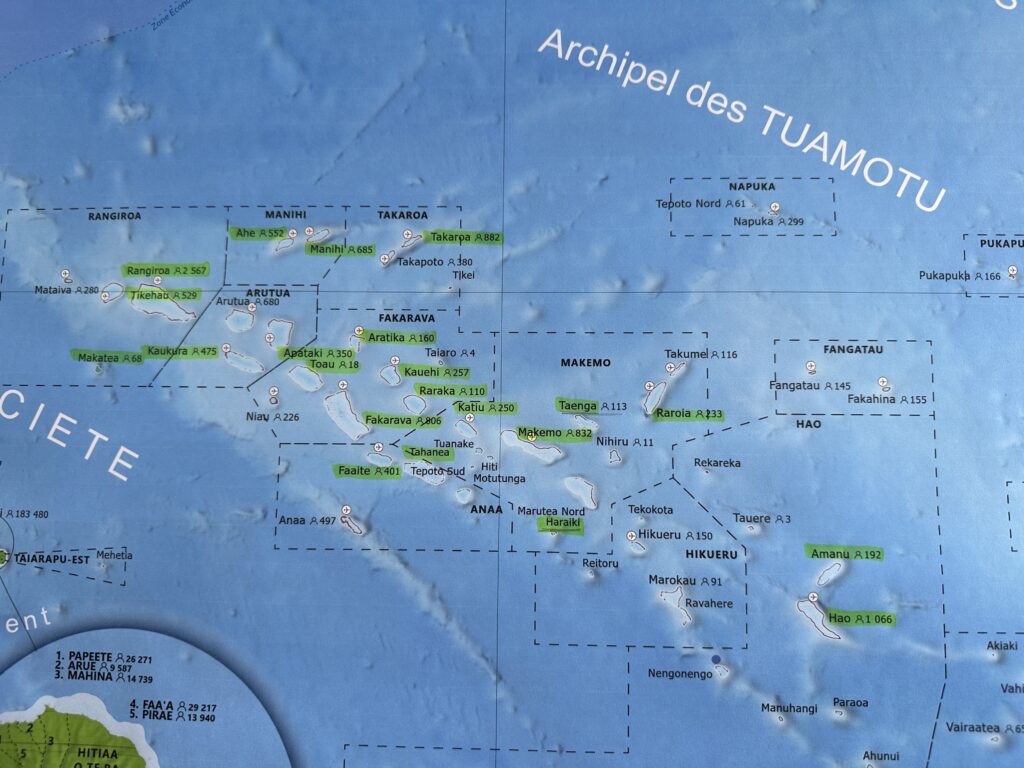
We planned to land on the Raroia atoll, which is where most cruisers use as their first landing point in Tuamotus. The passes should only be used during slack tide, as the currents are very strong as it changes between high and low tide. So, one needs to plan to arrive not only in daylight, but also when slack tide occurs.
And that is not the last obstacle, either. Once inside the atoll, the waters are calm, as the reef protects from the waves outside. However, these atolls are scattered with what is called ‘bommies’, which are submerged reefs that suddenly rise from the bottom. If the sun is low in the sky, it is really hard to see them. And, they are truly everywhere!
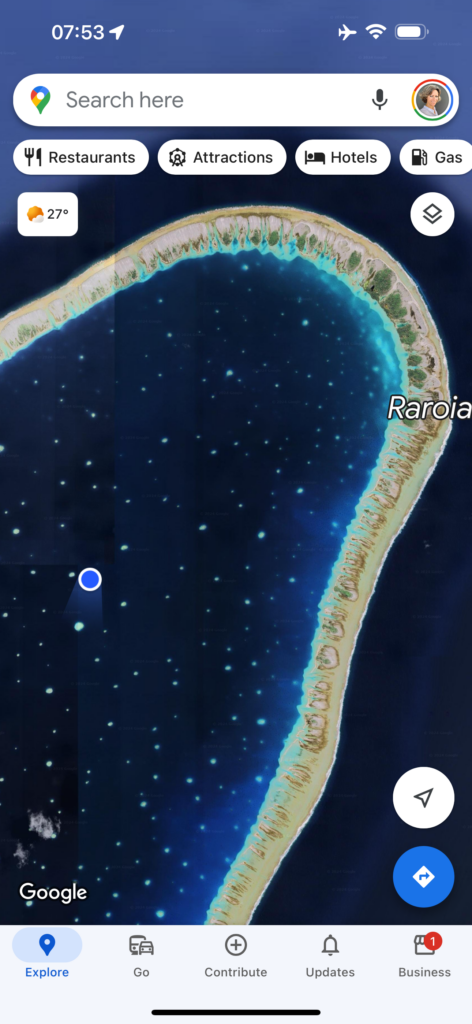
So, there were a lot of new obstacles we were facing during this passage. Needless to say, we were a bit nervous. It did not help that we were racing towards the clock as well… Ideally, we needed to reach the atoll at least 24 hours before the forecasted high winds, that were expected to last more than a week. This to secure we were solidly anchored when winds expected to get into the low 30ies arrived.
After a three night sail, we arrived at the pass at 06:00am. We decided to enter right away, as the wind was calm, and it was right around slack tide.
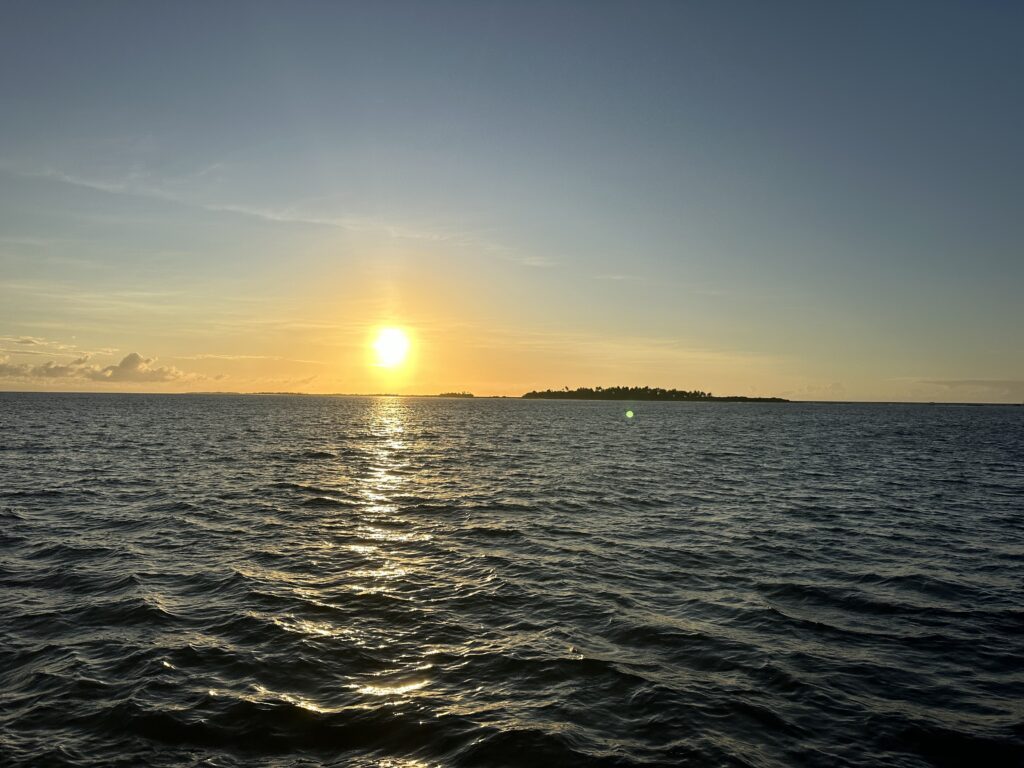
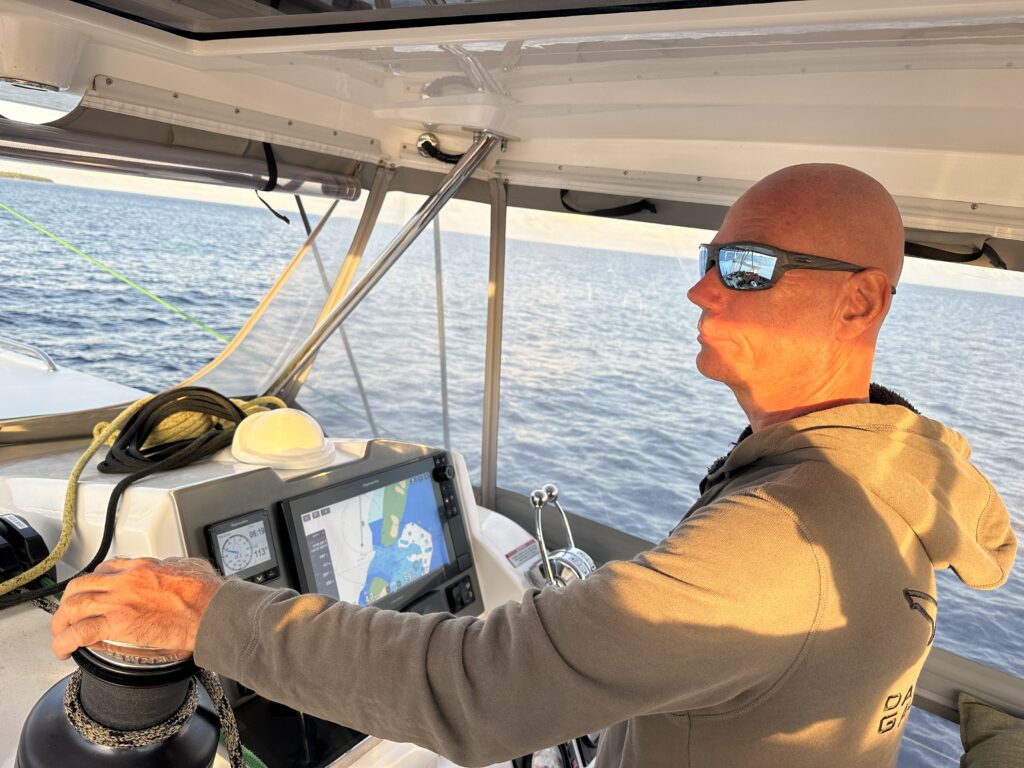
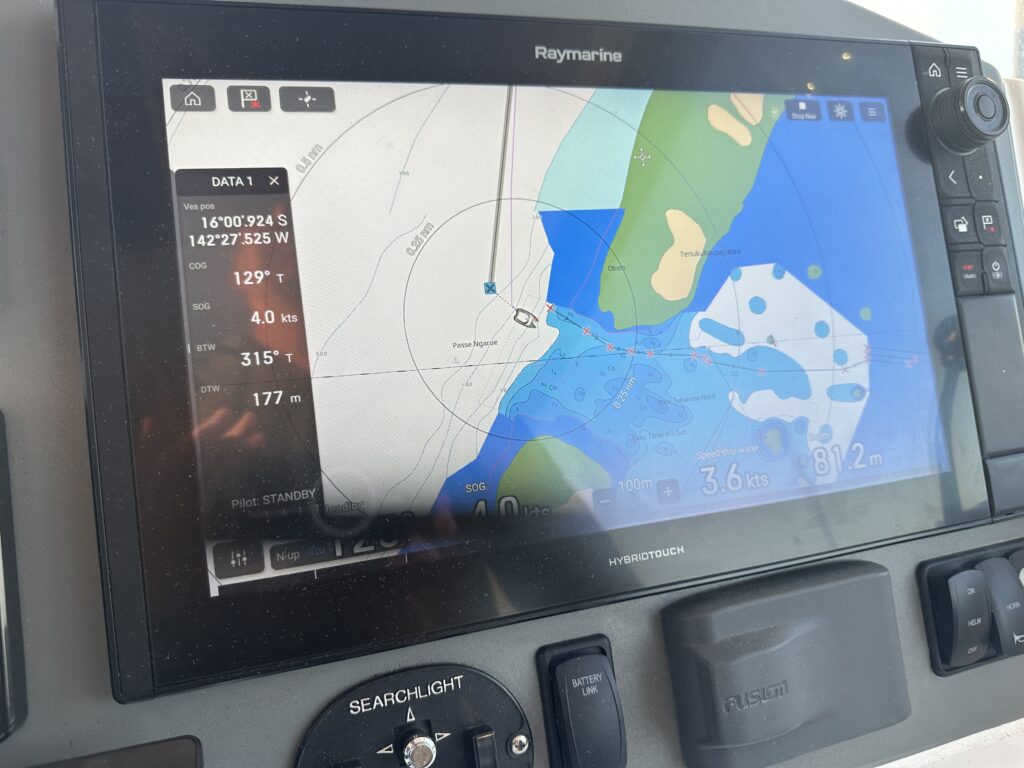
We entered the pass at 06.30am, and only saw max 0.8 knots of current against us. It was smooth sailing, the pass was wide and well marked. Phew – first obstacle down….
However, the challenge now was that we would face a very low sun as it was still early in the day. We were heading north towards our anchorage, which means we would have the sun directly in our eyes, and it would be hard to spot the many bommies on our way.
We considered waiting on the inside of the pass for the sun to rise further on the sky. However, we had a track to follow on the plotter from another boat that was here earlier in the season, and we decided to trust this. So, we set out the 8nm towards the anchorage.
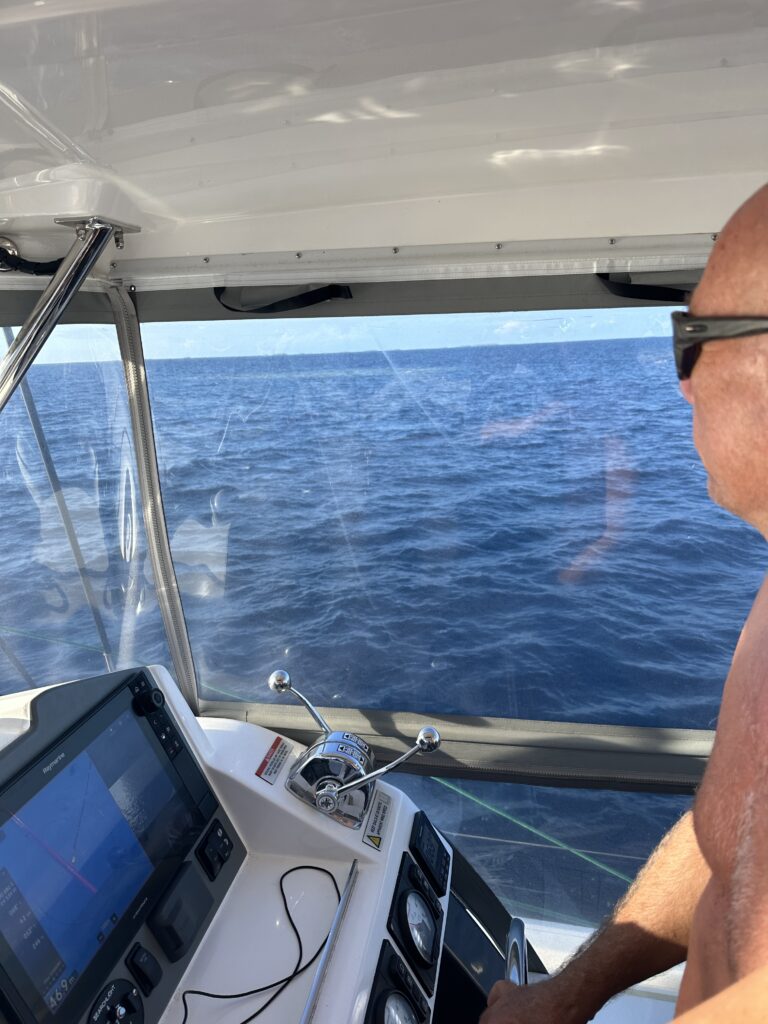
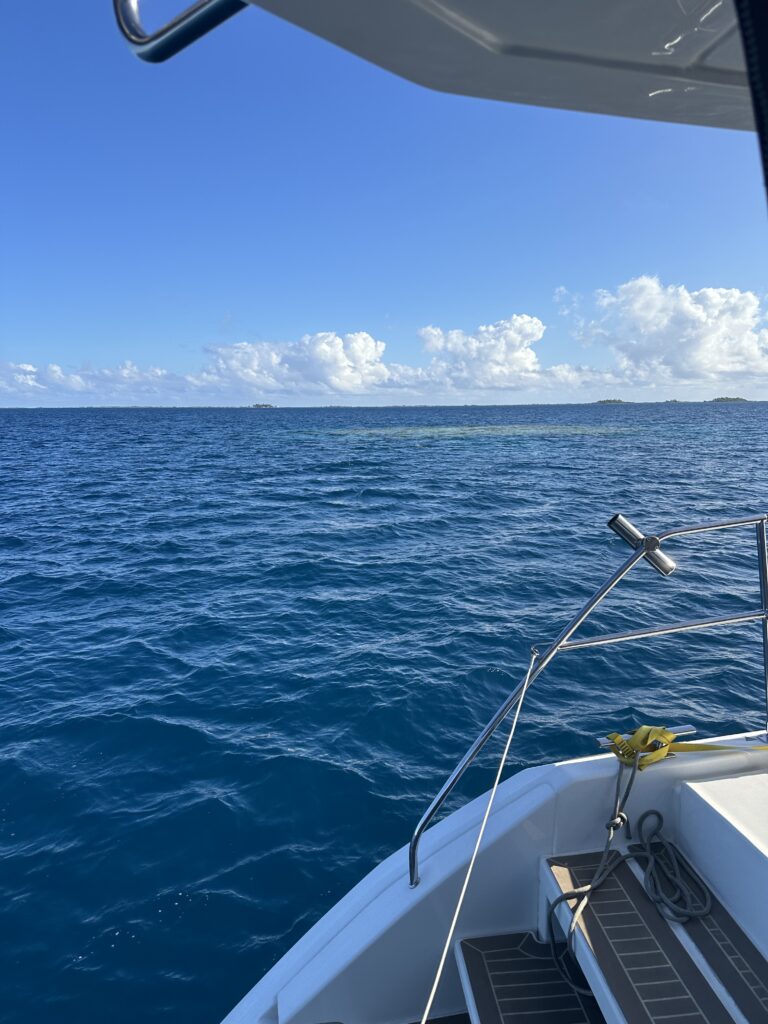
After a couple of hours motoring, we arrived in the north eastern corner of the Raroia atoll, where we plan to spend at least the next week as the winds pick up. We were happy to see many other boats we know from before already anchored there. We found a nice spot right next to our friends from SV Sauvage, and dropped the anchor.
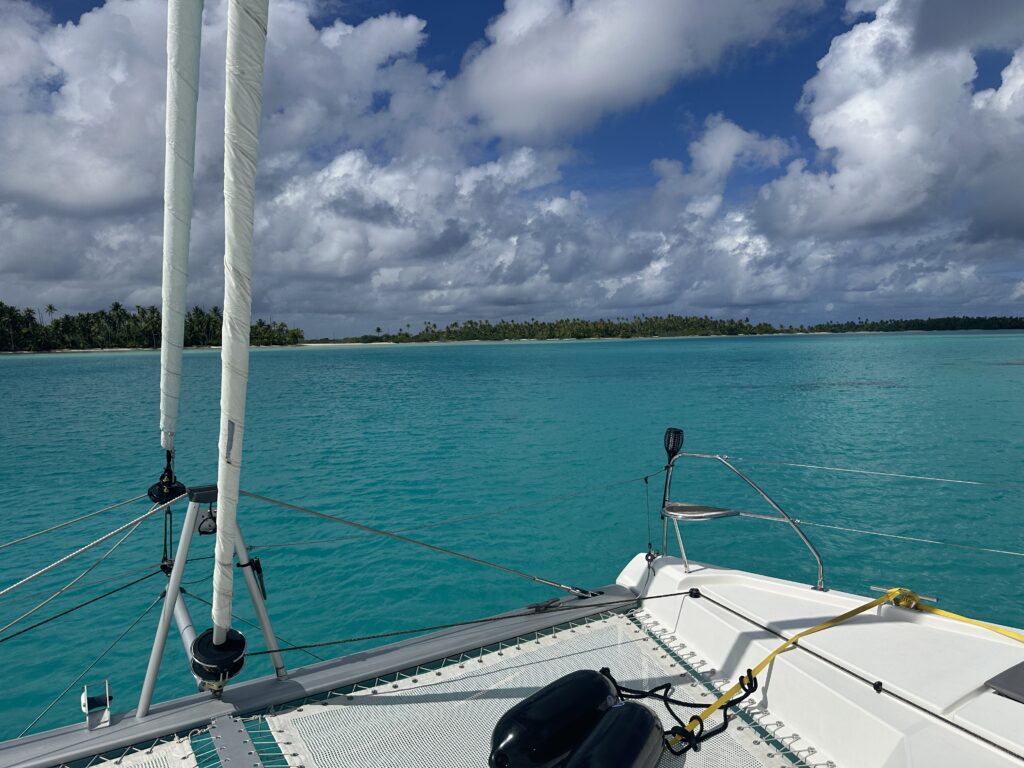
Now, the last obstacle which needed to be addressed, was not only to anchor in between all of the bommies surrounding us. We also needed to float our chain. This means that we add a couple of buoys on our anchor chain, so it can lift above the bommies if we start swinging.
So, a lot of new obstacles to overcome during this passage. And, we were sooo happy when we were anchor down, and had our new floating buoys installed.
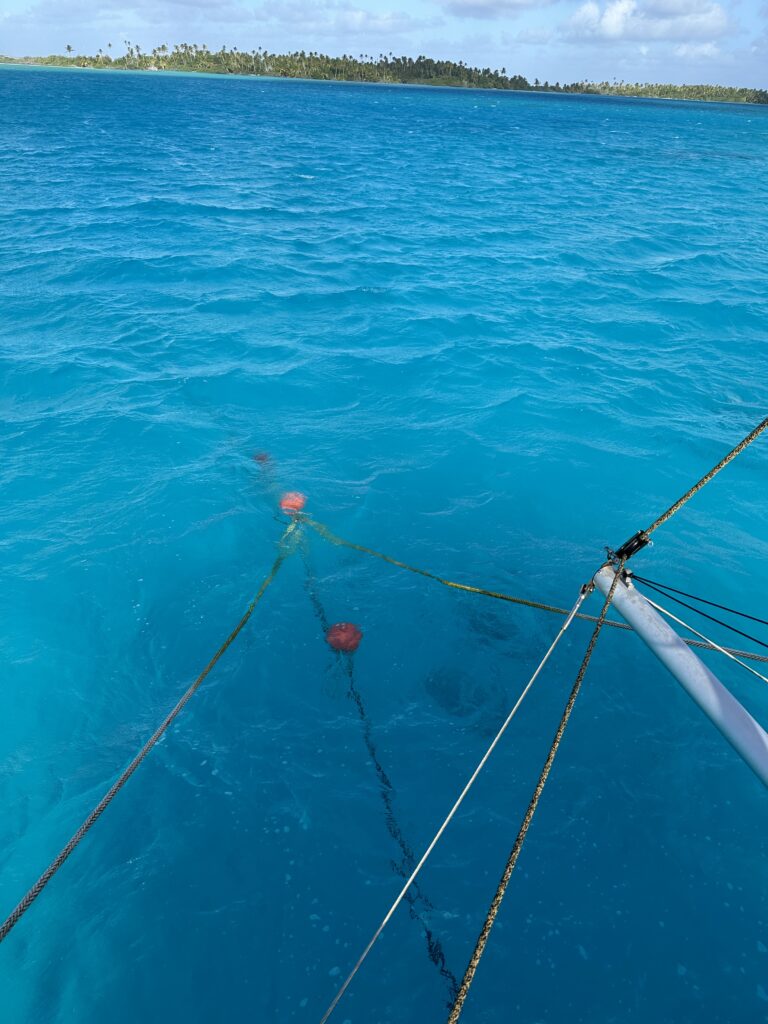
On this passage, we defeated our first pass into an atoll, securely navigated through bommies and floating our chain at the anchorage. Yay! Now the wind can arrive, and we are ready for a planned 5 months of atoll life in the Tuamotus archipelago!
